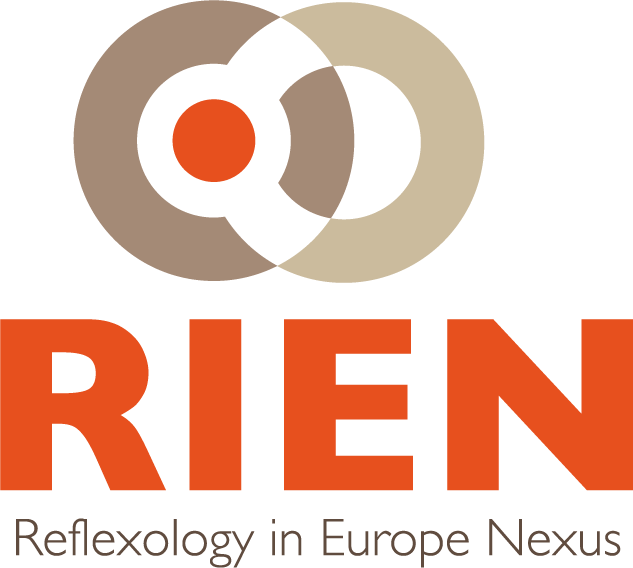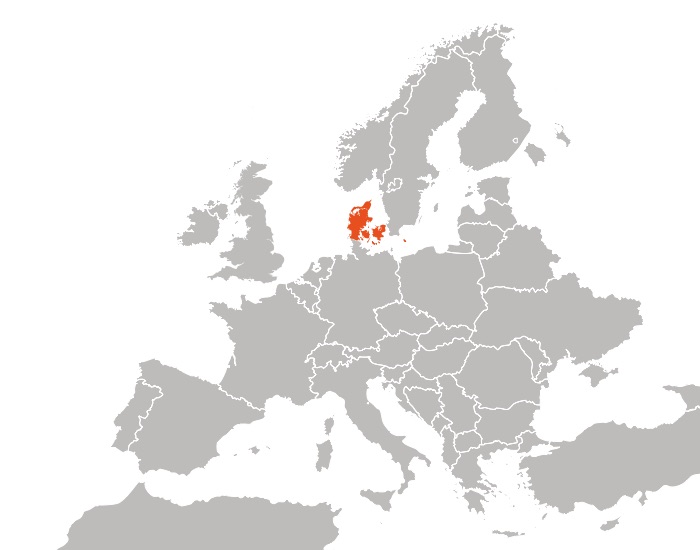Denmark
Association members
School members
Reflexology in Denmark
The practicing of reflexology, which in Denmark is defined as “other proper healthcare”, takes place in a liberal environment where everybody is allowed to sell and market various kinds of treatments and healthcare.
A reflexologist is however subject to Danish tax and VAT statutes. This means that he or she has to register business activities according to current rules. read more Reflexology treatment is subject to VAT if: Reflexologists will mostly establish themselves in private clinics, often attached to their homes and with regulated conditions. There is a move towards collective clinics housing a host of different alternative therapies under one roof. We have also witnessed the establishing of Health Houses where e.g. general practitioners, chiropractors, physiotherapists and sometime also reflexologists, who offer their individual services but without formally co-operating and referring patients to each other. Reflexology in Hospitals In Denmark the different professions within the established healthcare system (publicly approved educations and employees in the official healthcare service such as nurses, physiotherapists and others), and the many other professions (such as reflexologists, massage therapists, etc., who do not receive publicly approved schooling and no immediate employment in the health service sector) work in a parallel systems. Reflexologists do not receive authorisation from the Danish public healthcare system, but experience an ever growing recognition from the population at large and from other professional co-workers. There is still no tradition among Danish GP’s for referring patients to reflexology treatment. PR Title and Registration The title reflexologist is not a protected title, meaning that everybody may call themselves reflexologists. Act no. 351 from 2004 concerns the registration of complementary therapists (RAB). The statutes are administered by the trade itself, and a reflexology association which fulfills the prescribed requirements may be approved by the Danish National Board of Health to register and supervise its own members. The RAB title, ”Registreret Alternativ Behandler” (Registered Alternative Therapist), is protected and reserved for reflexologists who are members of an approved professional association and have proved to the association that they fulfill the formal requirements regarding basic training and CPD (Continuous Professional Development) and that they respect rules of good conduct in their clinics (regulated conditions, sufficient ethical standards, etc.). The professional associations encourage clients to ask any reflexologist they may seek out about his or hers professional standing, thereby making sure their reflexologist is RAB approved. When a reflexologist is RAB approved, the client may refer complaints about any poor treatment etc. to the association that the reflexologist is registered with. The client has no such right of complaint if the therapist is not RAB approved and will have to act within the general rules of common law. By 1st May 2011 approximately 1,100 Danish reflexologists have been registered through the 4 associations currently approved by the National Board of Health to undertake registrations. The Board of Health supervises the associations, which in turn supervise their own, registered members. The Education of Reflexologists in Denmark Teaching takes place at privately owned schools. Students pay their own tuition fees and cannot apply for public grants for this kind of education. Minor deviations apart, the level of education defined in the RAB regulations and the level prescribed for VAT exemption is the same. But almost every school of reflexology currently in operation offers education and degrees on a higher level. Statutory Level as of 30th June 2011 (a total of 666 lessons): Other subjects within alternative healthcare: In Denmark there are 16 reflexology schools which offer education on a somewhat higher level which naturally qualifies students for RAB approval and VAT exemption. As a rule, these schools cooperate with one of the existing professional associations. Statistics on Reflexology (Source: The Danish National Bureau of Statistics, as of 1st April 2011) The population of Denmark is approx. 5,500,000 people. If we get ill, we have about 27,500 GP’s and other physicians to take care of us, approximately 5 physicians per 1,000 inhabitants. The number of nurses equals 9.5 per 1,000 inhabitants. By comparison we have 1,100 RAB-reflexologists – 1 reflexologist per 1000 inhabitants. 40.9% of the Danish population have been in touch with their GP within a period of 3 months, while 22.5% have been using complementary and alternative treatment (CAM) within the last year. Reflexology is the Most Commonly Used Complementary Therapy in Denmark! A survey from 2005 shows that 21.6% of the population within the last year (2004) used CAM; 6.1% of these has been using reflexology. 75% claims to be satisfied with the results. A survey from Syddansk Universitet (University of Southern Denmark) further shows that 44% of all Danish complementary therapists (totalling 2,700) are reflexologists. Next comes 15% massage therapists and acupuncturists at 12%. The typical therapist is a woman at the age of 49. 70.3% of the population finds that a person’s own efforts in relation to illness is of great importance, and 85.1% claims to do a great deal themselves to affect their state of health. Insurances A Danish Client Most Common Ailments Research/Documentation Members of the established healthcare system in Denmark are gradually becoming more and more interested in reflexology and in complementary healthcare in general. But in order to expand cooperation between established healthcare and the complementary means of treatment documentation of the effect of the latter is required. There is a growing interest in Danish university circles for working with research into the effect of complementary treatment, but funds for this type of work do not go far.
Reflexology treatments are exempt from payment of VAT provided that:
Any Danish citizen has the right to receive treatment from an outside reflexologist while admitted to a hospital. The citizen will have to pay for the treatment himself.
Marketing rules are comparatively gentle. Reflexologists may inform the public about who they are, what they do, and which special interest they may have. The presentation must at all times be factual, professional and sober, and reflexologists may not promise recovery or comment favourably on treatments without being able to document the achievement of such results. Scientific documentation is however not required.
Work-related health insurance programmes and private health insurances are growing. Recently, as of 1st January 2009, the major Danish private health insurance organisation “danmark” with a membership of 2,300,000 has decided to offer a reimbursement to members using reflexology treatment. Since 1st January 2011 reimbursement for acupuncture has also been possible.
A person using reflexology in Denmark is typically:
A typical client will have had a medical diagnosis within the last year:
During the last 25 years numerous smaller studies aiming to document the effects of reflexology have been carried out. There have however only been rather few officially approved experiments and studies. It is currently a challenge to the entire profession to work out appropriate methods for carrying out such studies.





